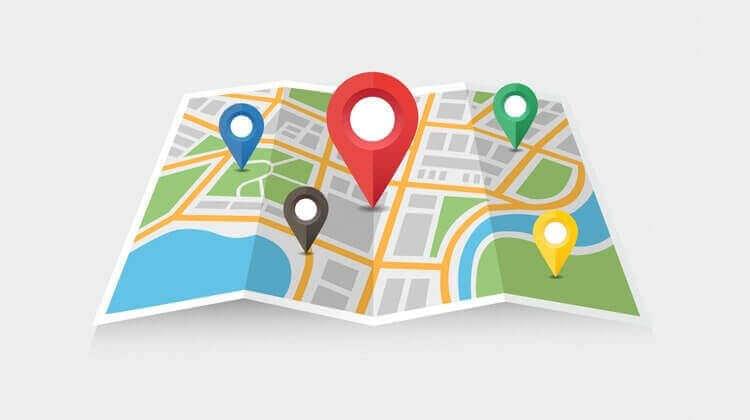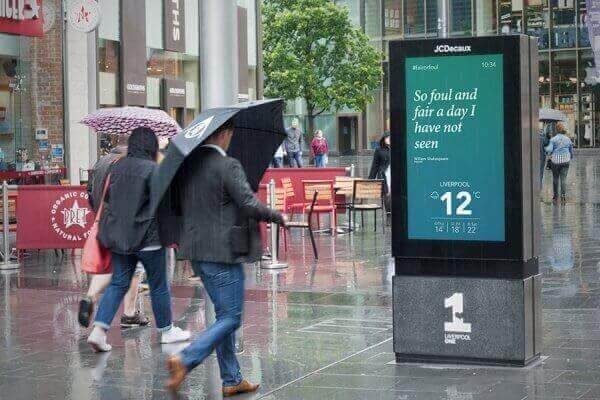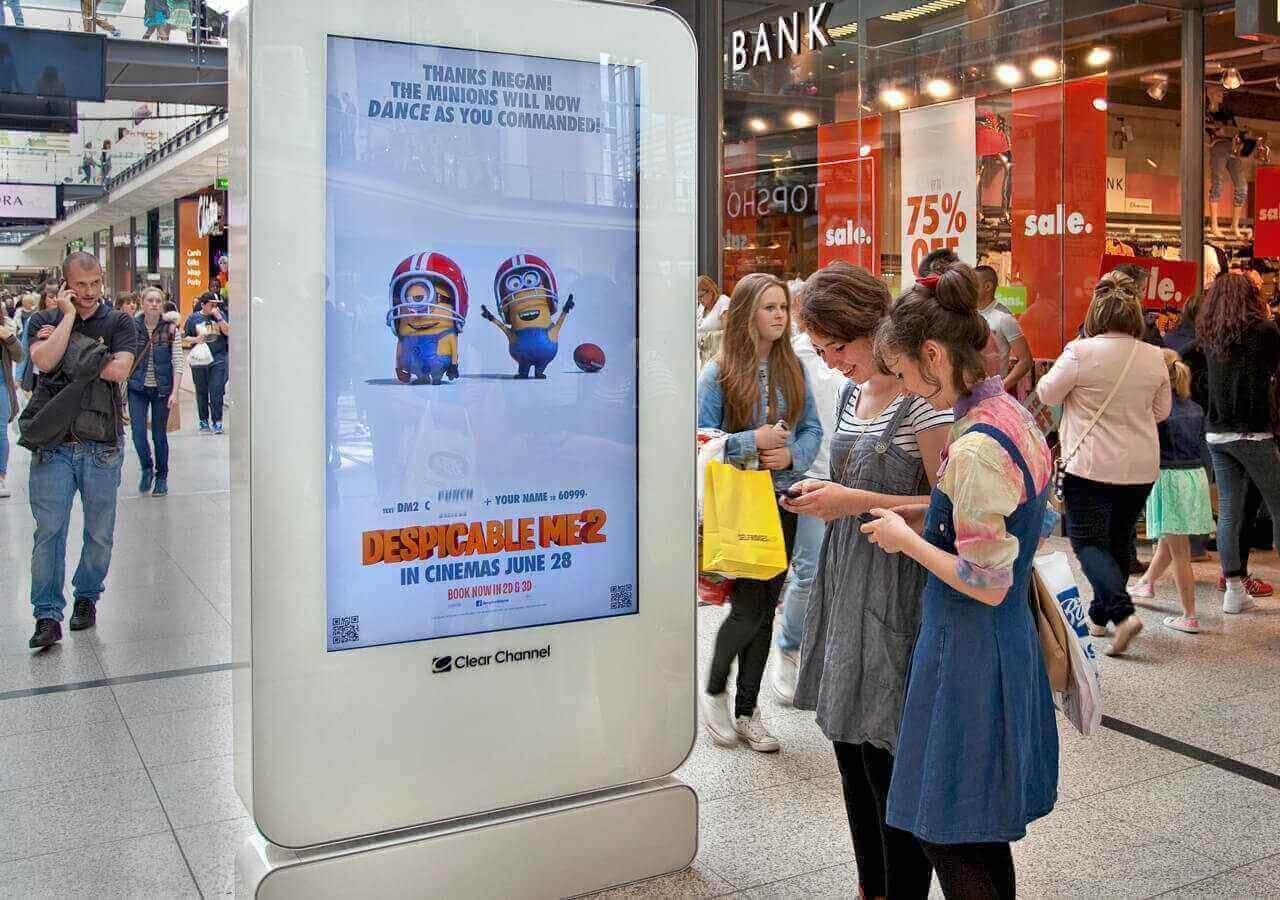
Employing mobile retargeting alongside out-of-home advertisements, including billboards, trucks, and bus stops, has forged an additional avenue for businesses to engage their target audience in a distinctive and inventive manner. Advertisers harness mobile advertising and location tracking to extend the influence of out-of-home campaigns, ensuring they connect with consumers precisely when they are most inclined to explore, make purchases, click, share, or visit.
The campaign shared research that showed that mobile click-through rates increased by up to 15% when they were supported by OOH advertisements. Outsmart states that improved out-of-home campaigns cause a 38% uplift in short-term action taken via mobiles.
But how does this location tracking work? And why does it work? The answers to these questions and more can be found in this article on the effectiveness and importance of OOH mobile retargeting in the world of marketing today.

The development of mobile retargeting
In the past, computers were the main source of retargeting from marketers. On, desktops, advertisers dig into search data through the use of cookies to deliver tailored ad placement to consumers. With the increase in popularity of mobile apps, mobile retargeting relies on device identifiers, especially IDFA and Google Ad IDs, to renew their connections with consumers and to turn user interest into conversions for app platforms.
Mobile advertisement, however, lacks the consumer impact potential that large, eye-popping out-of-home advertisements deliver. OOH advertisements, on the other hand, aren’t measurable in their effect on consumers as mobile advertisements.
Now, with the emergence of digital out-of-home advertisements, the lasting impressions left behind by large, digital, public advertisements are combined with the measurable results, accessibility, and retargeting ability of digital advertisements with the help of mobile.
This hybrid advertisement strategy offers a channel to consumers that purely digital or purely OOH campaigns can’t match. But how does the connection work?
How do OOH and mobile retargeting work?
Geo-everything
Geo-location data allows advertisers to generate information that tells them the right targets for their advertisements, in the right place, at the right time.
The emergence of geolocation data through mobile has made DOOH advertising a leader in audience location intelligence. Its increased adaptability, stemming from sources such as carrier data, mobile ad networks, GPS, mapping apps, sensors, and beacons, has allowed mobile retargeting to flourish in collaboration with OOH campaigns.

This location targeting is integrated through interaction with the associated mobile ads, store visitation, website traffic, and app downloads through a consumer’s mobile device, effectively providing the data media planners need in order to monitor their strategy’s performance. Partly due to the increase in mobile device usage, Thinknear states that the volume of location data doubles every 12 to 18 months.
But geo-location data spans farther than just time and place. Mobile extension programs are even being offered by OOH advertising companies. Through the programs, commonly referred to as geofencing, advertisers have the ability to identify individuals who are exposed to their OOH ads and then retarget them with their mobile advertisements. Geofencing, the use of GPS or RFID technology to create a virtual geographic boundary, enables software to trigger a response when a mobile device enters or leaves a particular area. Its various performance indicators include:
- Audience segmentation – targeting devices to target audiences based on demographics, browsing behaviour and location
- Geo-conquesting – targeting devices who visit competitor locations
- Geo-farming – targeting devices who have visited specific locations in the past
- Attribution – measuring the devices that were served an impression and later entered a physical location
DOOH Integration
Gone are the days when marketers tracked simple demographic data based on assumptions of time and location. Marketers have integrated machine learning and artificial intelligence into their DOOH campaigns, leveraging themselves over other traditional types of advertising. The new generation of DOOH is smart, efficient, trackable, and now persistent due to its new connection with mobile retargeting.
Billups, for example, an OOH and DOOH advertising company, provides brands with location-based audience intelligence in order to analyze consumer behavior. With this technology and resultant performance indicators, companies can maximize the efficiency of their OOH campaigns thanks to the power of mobile and location data.
Anonymized DOOH data
Newly introduced to the field is technology which allows for information captured from phones to be anonymized by carriers and data vendors who then sell it to media owners. This data is used to subcategorize the demographics that have been exposed to the advertisement in a particular time frame. This data, cross-referenced with other variables such as traffic or weather, is the cornerstone of mobile retargeting and the benefits that it is bringing to advertisers.

The types of mobile retargeting
Location-based targeting is an advanced system of many streams of variable information. Advertisers focus on different strategies in order to target groups specifically. Here are some of the practices advertisers are using most commonly today:
Geo-fencing: As covered earlier, geo-fencing refers to the targeting of users within a predefined area in terms of longitude and latitude. It can be described as a virtual “fence” – any consumer inside the radius of the advertisement can be targeted. The strategy is commonly used inside dense shopping centers in order to drive more foot traffic with advertisements tailored to a specific store’s promotions.
Geo-conquesting: Similar to geo-fencing in that it is centralized around a certain radius, geo-conquesting is a new tactic with the intent of reaching consumers when they are physically in or around a competitor’s store. By accessing a consumer’s ‘current location’, as well as situational variables such as time and probable reasoning, marketers can now create relevant and impactful advertisements in order to drive a competitor’s client in the other direction.
Geo-aware targeting: The basis of mobile retargeting, geo-aware targeting uses location data supplied by a mobile provider in order to display ads of nearby businesses on potential consumers’ mobile devices.
Place-based targeting: This strategy involves targeting mobile users at a specific location at a specific time. It is commonly used at live concerts or sporting events.
Hyper-contextual targeting: Hyper-contextual targeting translates hyper-local data from potential consumers to create meaningful, relevant advertisements for consumers with the goal of increasing purchase intent.
Why OOH mobile retargeting is more important than ever
The effectiveness of digital, social, and mobile ads is on the decline due to programs such as ad blockers and the increasing frequency of fraud. Statistics show that over 30% of smartphone users use adblocker programs. This means that mobile ad blocking has increased by over 90% year-over-year, per Omnicore.
As they adapt to this inefficiency with digital advertisement, marketers are favoring omni-channel approaches, such as OOH mobile retargeting, in order to cut through the noise.
And the numbers back their strategy.
According to a UK-based OOH researcher, Ocean Neuroscience, consumers exposed to an out-of-home ad are 48% more likely to react to a similar ad on their phone later. Per a research report from Berg Insight, the location-based advertising market is expected to hit nearly $15 billion in 2018.

The reason for this growth is due in large part to the increase in the popularity of OOH and DOOH advertisements over the past few years. This growth of OOH can be traced to the fact that other mediums of advertising are easily bypassed: TVs have remote controls, and digital ads aren’t being trusted by the general public due to fraud and viewability problems. The fact that OOH can’t be skipped, however, does not entirely constitute its growing popularity. That title is owed to digital-out-of-home advertising. The rise of DOOH advertising has brought the creation of engaging and dynamic content that effectively draws attention away from phones and into large, compelling digital formats.
Magna stated that global OOH spending grew 4.6% in 2018; the only traditional ad medium to show growth last year. For every dollar spent on OOH advertising, it returns $5.97 in ROI revenue. This is 40% more effective than digital search and 14% more effective than print.
The companies taking advantage of the trend
Using strategically placed OOH advertisements in a popular New York City subway station, a fully wrapped shuttle train, and an improved and dynamic landing page coupled with the geofencing of these OOH advertisements and their 18 WeWork locations in Manhattan, WeWork saw an 85% increase in SAR (secondary action rate) and tracked an estimated 32.6K visits.
(SAR: A measure of the percentage of ads that resulted in a downstream “action” or desired behavior, beyond the initial ad click, divided by the total number of impressions served.)
Pepsi began a campaign in the Netherlands that entailed a blind taste test comparing Coke and Pepsi. After the “Pepsi Challenge”, the soft-drink company retargeted potential customers through programmatic digital out-of-home advertising, Digital Signage Connection reported.
With their OOH mobile retargeting strategy, Circle K generated over 133K tracked visits in select locations in only three areas. The company used a 1-mile geofence around 662 store locations, developed a dynamic landing page, and saw massive results: a 141% increase in SAR, and 7.9 million total tracked impressions.
How Movia Media is utilizing OOH mobile retargeting
Movia Media has effectively paired truck wraps and mobile billboards with the power of mobile retargeting in order to deliver out-of-home ROI measurement.
With on-board data analytic devices, Movia Media has the ability to measure who comes in contact with an advertising campaign. Mobile data management platforms are able to detect, track, and build mobile audiences through its pattern recognition of device IDs. Device IDs provide Movia Media with a unique set of data – location, gender, age, device type – that isn’t available through traditional cookies.

Additionally, Movia Media places significant emphasis on artificial intelligence and the value it delivers to its clients. With the machine learning algorithms of the leading mobile retargeting companies that Movia Media has partnered with, the company has the ability to analyze any user’s past ad engagements, mobile web behavior, and previously visited locations.
The capability of their artificial intelligence combined with device ID data allows Movia Media to reach the right audience at the right time with the right message, delivering massive value to clients.
Time to capitalize on the trend
Out-of-home mobile retargeting is a tactic that every advertising campaign should be incorporating into their marketing strategies. The effective and measurable results that this dual-channel approach creates provide incredible value to any company looking to increase their rate-of-return on their advertisement spending and gain a substantial competitive advantage over their competition. Invest in the OOH mobile integration trend today, and reap the benefits for years to come.


